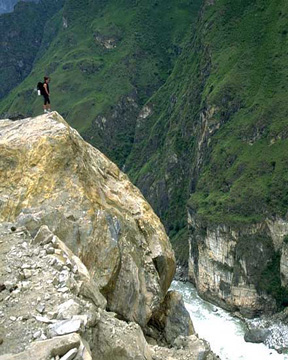
THE DAILY TIMES
4 November 2003
By Iftikhar Gilani
NEW DELHI: China’s move to divert Tibetan rivers has upset India’s grandiose plans of interlinking its rivers. Experts now believe that China’s not raking up its claims on eastern states of Sikkim and Arunachal Pradesh during Prime Minister Atal Bihari Vajpayee’s recent Bejing visit could be a diplomatic diversion to hide a far more serious matter for India.
India has planned to link 30 rivers at a cost of Rs 5,600 billion by 2012. A task force, headed by former minister Suresh Prabhu has already completed the feasibility report on six links.
Mr Vajpayee’s critics here draw parallels between his visit to Lahore in 1999 and to Beijing in 2003. “It is almost the same, when Mr Vajpayee was signing the Lahore Declaration, Pakistanis were digging trenches in Kargil. Now, when he was dancing in Beijing over China’s reportedly giving up its claim on Sikkim, Chinese were drawing plans to put India in the doldrums,” they say. Experts argue China’s move not only threatened the environment but also national security. If Beijing goes ahead with the Brahmputra project, it would practically mean a declaration of war against India, they believe.
Originating from a glacier near Kailash, the Brahmputra is the largest river on the Tibetan plateau and the highest on earth. It runs 2,057 kilometres in Tibet before flowing into India. It has been discovered recently that the river’s gorge forms the longest and the deepest canyon in the world. China plans to construct the world’s largest hydroelectric plant at the Great Bend to generate 40,000 megawatts. Also the diverted water will be pumped northward across hundreds of kilometres of mountainous region to China’s arid northwestern provinces, Xinjiang and Gansu (Gobi desert).
India and Bangladesh will also remain at the mercy of China, which could withhold water for power generation and irrigation during the dry season and release water during the flood season with catastrophic consequences for eastern South Asia. Taking into view that it is impossible to divert the mighty Brahmputra conventionally, China is planning to accomplish this project “with nuclear explosives”. The Chinese Academy of Engineering Physics in Beijing has recommended this peaceful use of a nuclear device, said a London-based science journal. Since the region is an earthquake-prone zone, India’s Disaster Relief Committee Chairman Sam Kannappan has asked the government to talk seriously with China to secure the future of millions in India.